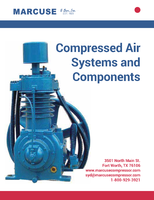Steel Sheet Handling Made Easy

The Schmalz VacuMaster Vario crane-operated vacuum lifting device helps to achieve more safety and efficiency in steel sheet handling.
Complete vacuum lifting device including the integrated vacuum pump and 14 sliding, spring-mounted suction plates for attaching to the crane.
The steel work company Haist, based in Baiersbronn-Mitteltal in Germany's Black Forest region, was able to streamline its material flow for loading their CNC plasma flame cutting machine to such an extent that today all large, heavy steel sheets are transported by a single employee. Before, at least two employees were required to perform this task. The process of transporting the steel sheets from the storage area to the machine took far too long and was not completely safe. Previously, loads were handled using a crane and chain suspensions. This always resulted in safety problems, as plates were constantly in danger of slipping through the suspensions. The steel sheets produced by Haist are medium-sized at 1,500 mm x 3,000 mm (L x W), weigh between 540 kg and 1,800 kg depending on thickness and are particularly difficult to handle.
Simple handling thanks to the ergonomic operating unit with a holder for the chain hoist remote control.
Today, this process looks completely different. Thanks to the vacuum lifting device VacuMaster Vario 2000 it was possible to make the handling process faster and considerably safer as well. This device is designed for a maximum load of 2,000 kg and is composed of a steel longitudinal beam with an ergonomic operator handle, integrated vacuum reservoir and vacuum generator. The entire unit is suspended on the crane. After connecting the power supply and switching on the vacuum pump, work can begin immediately. Fourteen single suction plates are installed for lifting, gripping and transporting items.
Now, only a single employee is required for plate handling and much less time is needed for the task. Lifting loads using a vacuum system requires less strength, prevents the employees from overstraining themselves and is much safer. Unproductive down-time can be dramatically reduced. This leads to better use of machine operating times in the form of "real" production times, which leads to an increase in productivity.




